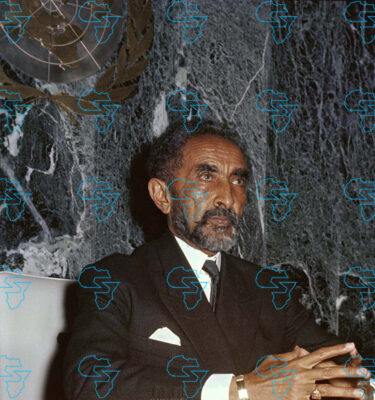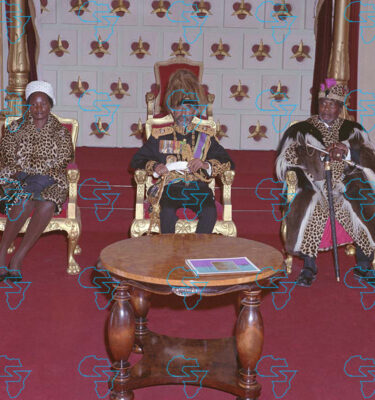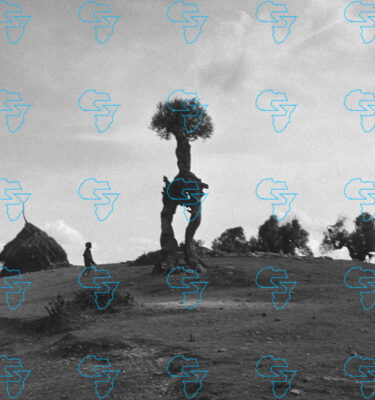
Long a center of Tigray’s gold trade, the northern town of Shire has transformed into a hub for a gold smuggling network that stretches across Ethiopia and into neighboring countries. An investigation conducted by The Reporter found that gold of varying quality is smuggled into Shire from as far off as Congo to be mixed with high quality bullion that is then eventually sold off to the National Bank of Ethiopia (NBE).
Shire offers higher premiums on the smuggled gold, in part driving Ethiopia’s record earnings from exports in 2024/25, according to sources familiar with the thriving underground trade.
However, the complex and dynamic influx of gold into the central bank’s Shire branch is mired in issues stemming from Tigray’s political volatility, while environmental and safety concerns surrounding the mining bonanza in Tigray remain unaddressed.
According to Birikti Gebremedhin, head of the Tigray Mining Bureau, the region’s miners supplied close to 19 tonnes of gold to the NBE’s branch in Shire last fiscal year—around 80 times the volume supplied in 2023/24.
A Ministry of Mines document obtained by The Reporter this week corroborates the bureau’s figures, putting the total volume of gold supplied to the NBE—the sole legal buyer of gold mined in Ethiopia—in 2024/25 at close to 39 tonnes.
The bulk was sourced from artisanal miners in Tigray, followed by Gambella (5.4 tonnes), Oromia (5.2 tonnes), Benishangul-Gumuz (4.7 tons) and Sidama (165 kilograms), according to the Ministry report.
Corporate miners, on the other hand, had lukewarm success, managing to supply just 2.7 tonnes over the course of the year, with MIDROC Gold accounting for nearly all of it. The three other large-scale mining firms mentioned in the report had less than 60 kilograms to show for their efforts.
Ezana Mining Development—a part of the Endowment Fund for the Rehabilitation of Tigray (EFFORT) —supplied no gold at all to the central bank, according to the report.
All told, Ethiopia generated a record-high USD 3.45 billion from gold exports last year, more than nine times the revenues in 2023/24.
While the Ministry attributes the success to “the positive effects of the currency floating of July 2024 and higher profit margins offered to local gold suppliers,” the numbers indicate it is owed to an exponential surge in output from Tigray.
“We’re not sure how this much gold was supplied via the Shire branch this year. We’re looking into whether it was all really produced in Tigray,” said Birikti.
The Tigray Interim Administration (TIA) led by Lt. Gen. TadesseWerede has established a committee to assess the region’s gold mining industry and is in the process of restructuring the Mining Bureau as well as Ezana Mining.
Gold-related activity in Tigray has been suspended, according to several sources. However, sources also stated gold activities largely suspended due to wide and sudden outbreak of cholera across Tigray, not because TIA ordered the mining operators to stop.
These sources told The Reporter that while much of the gold that reaches Shire is mined in Tigray, a large portion of it makes its way to the town from various parts of Ethiopia, as well as from neighboring Sudan and Eritrea, or even as far away as the DRC.
The high premiums offered by the NBE Shire branch help draw gold in, according to market insiders. Low-quality gold from elsewhere in Ethiopia or from across the border in Sudan and Eritrea is routinely smuggled in and mixed with purer gold mined near Shire and sold off at a higher price.
“Cheaper gold is smuggled in from Sudan, Eritrea and places like Gambella and mixed with the more expensive gold in Shire. Then, it’s supplied to the NBE branch at a higher price,” said one man who has firsthand experience in the trade.
Although reports of gold being smuggled out of Tigray have surfaced frequently over the years, it appears a new trade going the other way has emerged.
Where is it coming from?
Inside sources who spoke to The Reporter indicated a large part of this reverse trade is conducted between Eritrean military officers stationed near the border and their counterparts in Tigray. They claim the officers opt to smuggle gold into Tigray rather than surrender it to the administration of Isaias Afwerki or their commanding officers in Asmara.
In exchange, they take cash, coffee, teff, cement, solar panels, and a range of other commodities, according to The Reporter’s sources. Small villages on the border, such as Adi Kiltie, Egun, and Rama serve as hubs for the trade.
“These routes also serve as human trafficking stepping stones between Eritrea and Ethiopia. It is all run by Eritrean and Tigray convoys, on both sides,” explained one source. “The Eritrean and Tigrayan generals are partners, and each have their own network of smuggling routes. The commodities cross with their respective military convoys. But both keep the business from their respective central governments.”
Gold also makes its way to Shire from war-torn Sudan, according to inside sources.
“People involved in arms trading and gold smuggling in Sudan use the Shire branch to launder money,” said one source.
Business hit a snag last month when, according to a well-placed source, the NBE Shire branch discovered that some of the gold it was being supplied had been adulterated.
“Now things are in a deadlock,” said the source.
Industry observers say the data reported by the Ministry of Mines relies heavily on self-reporting by suppliers, who are incentivized to report exaggerated figures. They allege officials take bribes and validate the inaccurate numbers, which are then used by the central bank.
“NBE calculates the gold supply data from the amount of money it effected for gold purchasing purposes. This expense includes the actual money spent on gold purchase, the money disbursed for gold purchase price margins, and money disbursed for different purposes in the name of gold purchases. NBE is disbursing billions of Birr for gold purchases, but in actuality, it has nothing to do with the actual volume of gold supplied to NBE coffers,” said one source familiar with the market.
Some assert the figures are fabricated intentionally by the federal government to inflate export revenue data in a bid to justify its macroeconomic reforms and woo development partners and investment.
Birikti, who took the helm at the Bureau following the reshuffle in TIA leadership, urges all actors to take a step back and observe.
“Tigray and the country are not benefiting as much as they should from the gold resources. There are several problems facing mining in Tigray yet we supplied a huge volume of gold this year to the NBE. However, we do not see this only as a success. There are also problems. Mining operations must be environmentally sustainable and a resource for the next generation. If we let the mining continue the way it is now, it will pose very serious complications,” she said.
.
.
.
#Changing #Tide #Shire #Emerges #Hub #Gold #Smuggled #Eritrea #Sudan
Source link











